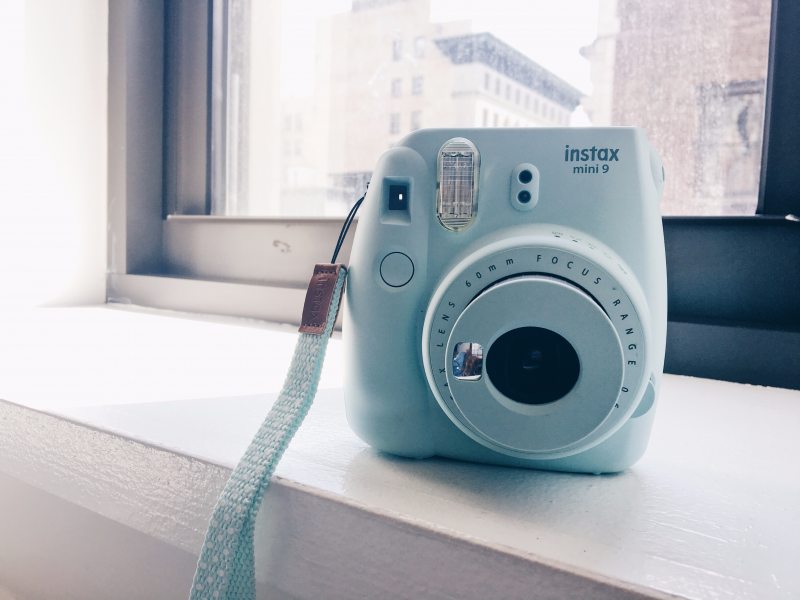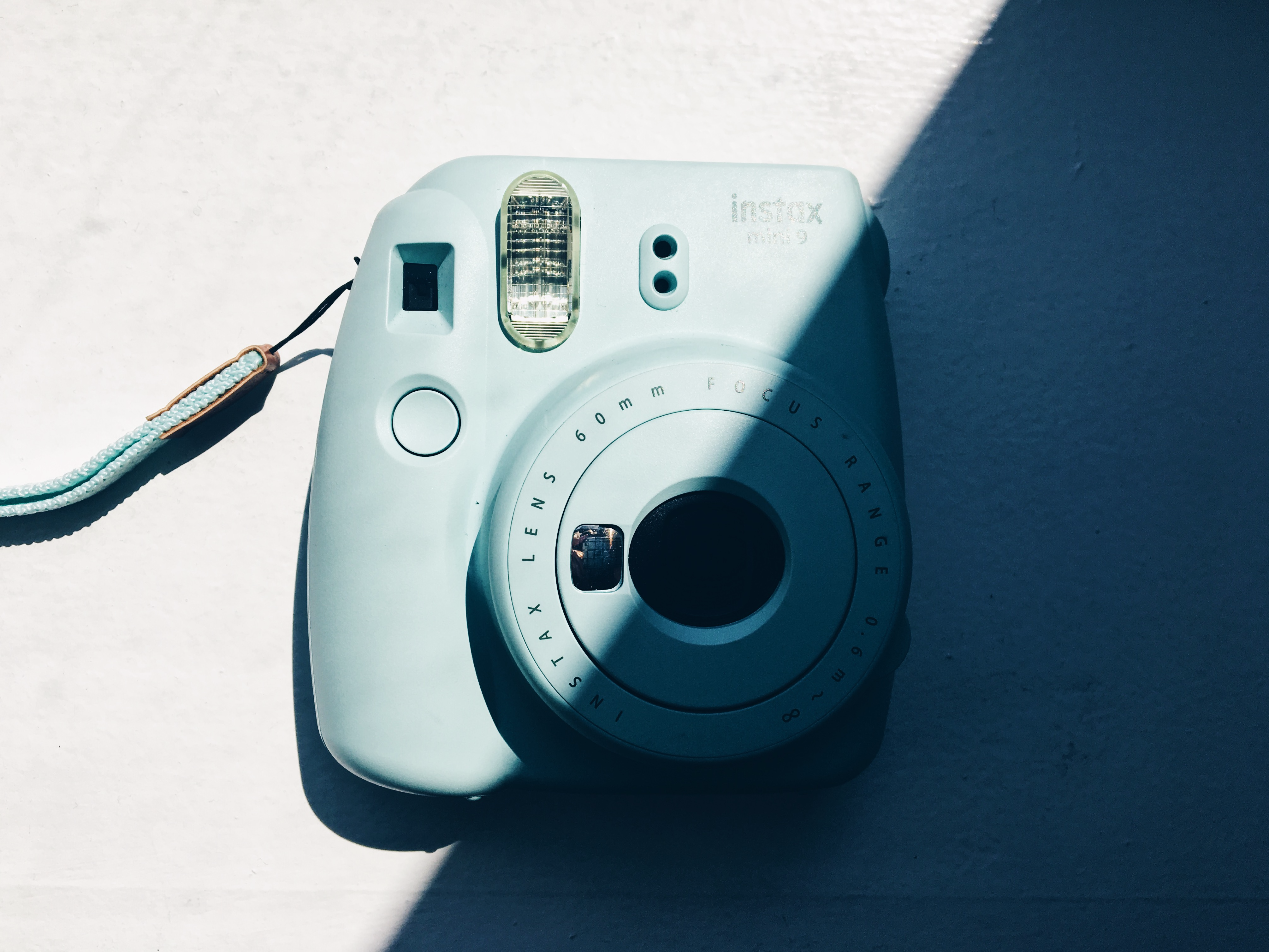The best way to describe Fujifilm’s Instax Mini 9 camera is with one word: Delightful.
Tech features aside, the camera is just plain adorable. When I opened the box for the first time, I quite literally squealed with excitement (and I’m not a squealer). It’s small, it’s retro, and it comes in an array of fun colors – mine was a minty blue-green called ice blue.
It’s so eye-catching and aesthetically pleasing, I was actually stopped on the street by someone who found it just as exciting as I did.
So what’s it like to actually use the camera? Dead-simple and lots of fun.
Here’s what I mean.
What sets the Instax Mini 9 apart from previous iterations of Fuijifilm's Instax line of cameras is three key features: A tiny mirror next to the lens for selfies, a lens attachment (not pictured) for macro close-ups, and high-key mode, which adds a bright, faded look to your photos.

Like most other Instax cameras, the Mini 9 uses credit-card-sized film that prints instantly. The camera can hold 10 sheets at a time.
The Mini 9 is super straightforward to use. A button next to the lens turns it on, while pressing the lens back into the body turns it off. A twist of the dial around the lens changes the brightness, and the shutter button on the right-hand side takes a picture. Wait a few seconds, and that photo pops out of the top of the camera. It runs on two AA batteries.
The camera costs $69 at third-party retailers like Urban Outfitters and comes in lime green, smoky white, cobalt blue, flamingo pink, and ice blue.
Here's my very first photo, taken of my colleague Kif Leswing. One thing to know about the Mini 9 is that is will flash every time it takes a photo, regardless of the lighting conditions (if you're trying to be subtle, this is not the camera for you). But it's helpful in low light: the Business Insider newsroom can be pretty dim on cloudy days, but Kif is lit perfectly.

I've shot with film, pinhole cameras, DSLRs, mirrorless cameras, smartphone cameras — you name it. While I'm mainly taking photos with my phone these days, I got a kick out of using the Instax because I remembered how beautiful film photos are, even if they're tiny, instant ones.

You can adjust the brightness yourself by twisting a dial around the lens — your options are indoors, cloudy, sunny/slightly cloudy, and sunny and bright, plus the high-key mode. But the camera also has light sensors and will suggest a setting based on the amount of light present.

These are just tiny instant pictures, not high-quality film prints. But the natural vignette in the afternoon sky, the graininess of the Flatiron Building, and the bluish hue to the image automatically makes it more beautiful than a standard smartphone shot.

I obviously had to try out Instax Mini 9's selfie capabilities, and the reliability of its tiny, built-in mirror. The verdict: Very impressive. Even though the mirror is little and has something of a fish-eye effect, it actually really helped in lining up the photo correctly. It was a small —but thoughtful — addition to the camera.

This one was...not so great. Here I was testing Instax Mini's high-key mode, but it was far too bright in the room for it to work properly. I think this photo may have had potential, but a missing nose just isn't something I can work with.

The same thing happened to this poor heart-eyes emoji pillow. Lesson learned: Use high-key mode wisely, and probably not in bright, sunny rooms.

The Mini 9 has a small lens attachment meant for taking close-up photos that conveniently snaps on the front of the camera. But my experience with it wasn't great. My photo of a bowl of grapes was completely out of focus, and another photo of some clever refrigerator magnets was basically one giant blur. In my time testing it out, I didn't shoot one close-up photo I liked.

To be completely fair to the Instax Mini 9, it's entirely possible I just couldn't get the hang of using the lens. You're not supposed to get closer than 35 centimeters away from your subject, but how does one measure that just by eyeballing it? With several more weeks of practice, I'm sure my macro photography skills would have improved, but it seemed silly to waste film on what would likely be blurry photos of flowers.
At the end of the day, are you really buying an instant camera for beautifully shot close-ups? Probably not. My advice: ditch the lens unless you absolutely need it.
User-error issues aside, the Instax Mini 9 takes some great little photos. Using this camera for a few weeks was the most fun I've had with a gadget in ages. It's low-tech, for sure, but perhaps we could all benefit from going back to basics.


